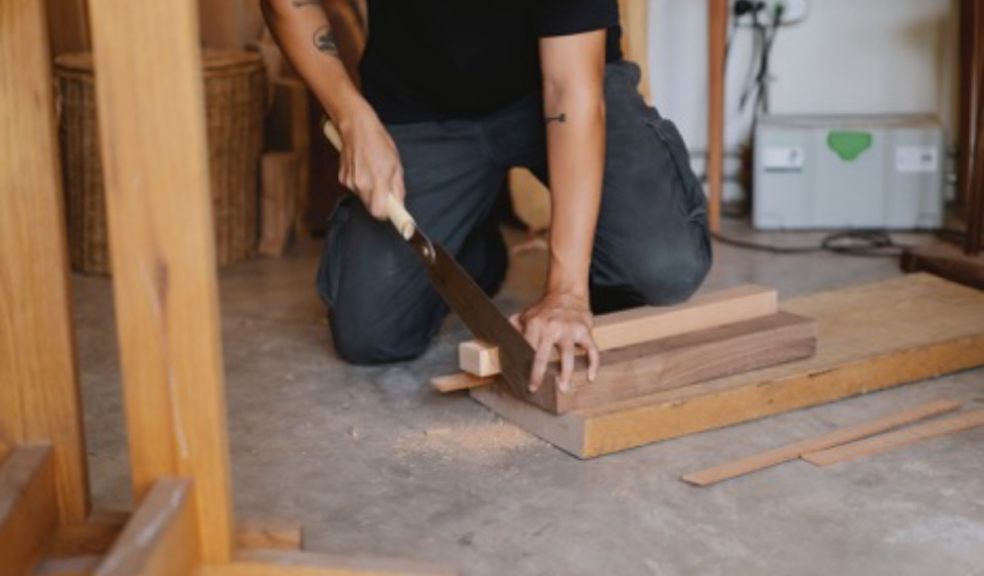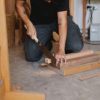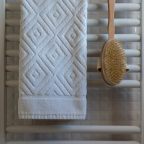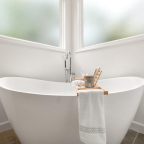
What is MDF and how to use it
MDF is a great construction product because it's relatively inexpensive, an excellent choice for woodworking, pretty adaptable, and can be used for various applications. But getting the best results from it is all about understanding the product and avoiding some common mistakes. In this article, we will get to know about the working and applications of MDF. Besides this, you'll learn how to use it and where to avoid it.
What is MDF, and how to work with it?
MDF (Medium Density Fiberboard) is a synthetic product composed of fine particles of wood compressed under intense pressure combined with resin and heat. For many people, it is more likely to be present in one form or another in their modern home without their knowledge. It is often found in kitchen cabinets, cupboards, shelves, furniture, and many other everyday items, but it is rarely seen in its original form. It is usually covered with a more attractive laminate or veneer.
It's a very dense product and is therefore significantly heavier than plywood or specialty wood. Remember this when manufacturing anything with it. Aside from this minor inconvenience, it is an excellent building material as it accepts adhesives very well and is securely attached with nails and screws with minimal risk of breakage.
As mentioned, it is very versatile, but it has its strengths and weaknesses and is not suitable for all applications. Use it correctly, and you will get exceptional results. If you misuse it, you will be disappointed.
Uses and applications
It is better to cut MDF outside because it generates a lot of dust. It is also advisable to wear respirators when cutting or grinding it to avoid exposure to fine dust and resins used in manufacturing. When exposed to moisture, unfinished Medium Density Fiberboard can swell and lose strength. Therefore, external plywood is a better option in applications where water exposure is possible.
Because it accepts paint so well, it is often used in exposed applications. For example, painted cabinet shells.
Use it to cut costs
The best and most obvious benefit of using MDF is the low price. Compared to plywood or other solid wood panels, it is a much better and inexpensive solution. You may use it if you need to cover large areas with a flat, paintable surface. For example, you can mix and match the materials with wall panels, an integrated shelving system, or a media center. Use it when a solid, flat surface is needed, then use wood for the edges and stiffness. Once everything is painted, you will never see a difference between where the MDF begins, or the carpentry begins.
If you plan to do something that requires a lot of flat panel lumber, you can save money by replacing Medium Density Fiberboard with plywood or chipboard, which is good and will give it an excellent finish.
Never cut it without a Mask
MDF cutting and milling produces a large amount of dust and fine particles, which contain a high urea-formaldehyde content. This is mainly due to the adhesive resins of the material. Wearing a face mask is strongly recommended as the dust particles produced contain formaldehyde, a known carcinogen.
If possible, always cut it in a well-ventilated area and wear appropriate masks to cover your nose, mouth, and eyes. The fine dust that arises when cutting Medium Density Fiberboard is very uncomfortable and can cause asthma and other respiratory problems when inhaled. Put it in your eyes, and it can be excruciating and itchy.
In addition to protecting yourself, be sure to cover all critical things and places of your home to keep them safe from dust particles. Medium Density Fiberboard powder is very light and delicate, so it moves quickly. Every cut inside causes dust to spread promptly and spread throughout the house.
Always drill pilot holes
It isn't recommended to use a screwdriver or impact recorder without first drilling a pilot hole and countersink bit, as any pressure or strong force will cause it to crumble and deteriorate. It appears to be a solid and sturdy material on the surface, but the composite is relatively smooth and flaky. It doesn't take a lot of pressure to break, and when it does, there's no turning back.
Therefore, avoid the use of nails and hammers, as any accident is likely to cause cracks and fractures in the surface. And make sure you don't drop it, as any strong impact will damage the exposed edges.
Never lift large sheets alone
Medium Density Fiberboard can be a harmless-looking material, but it's deceptively heavy, and a full-size sheet can weigh up to 100 pounds. So, lifting a sheet can easily cause sprains, aches, and pains. It would be better if someone could help you to carry these multiple sheets. But if you are working alone, always take one sheet at a time.
Use a primer
MDF is an excellent material for painting but always use a suitable primer first for best results. The tops are generally clean and smooth, but the cut edges can look a bit rough. You can always make it’s edges pretty smooth after you prime it, sand it, and then prime it again.
Once it's fully primed, you're ready to paint it any color you want and you'll have a much better, more even finish. The primer acts as an adhesive to achieve a uniform color finish every time you paint.
Do not use it outdoors
Never use Medium Density Fiberboard in projects intended for outdoor use. It is just not designed for wet weather use. Even with a primer and a lot of waterproof paint, it will eventually lose the battle of the elements and deteriorate quickly. Any water nearby is absorbed like a sponge, causing the material to swell and break.
Moisture-resistant MDF versions are available in the market. However, in general, any project requiring high waterproofing should use well-treated lumber or an alternative product that is much more water-resistant.



















